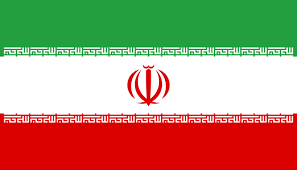Research and Implementation
Tehran, National Museum of Iran, 2011-12
Employer:
Iranian Cultural Heritage, Handicrafts, and Tourism Organization (ICHHTO), Deputy for Cultural Heritage, Directorate for Museums and Movable Cultural-Historical Properties, National Museum of Iran
Contractors:
Pishin Pajouh Culture and Art Centre
Persian Garden Institute for Living Heritage (PGILH)
Executive Director:
Mohammad Reza Miri
Research Team:
Dr. Mehdi Daryaei (Supervisor), Mohammad Reza Zahedi, Katherine Azami Tirani
Holdings:
Nasrin Zehtab, Golbehesht Taqavi, Fereshteh Zokaei
Photography:
Alireza Moghaddam, Hamed Daryaei
Informatics and Databank:
Samira Kalantari, Elmira Kalantari, Ehsan Abedi, Kajal Jahangiri, Hajar Aboualizadeh, Shirin Dowlatkhah, Maedeh Moniri, Mohammad Hessam, Homa Moghaddam, Sanaz Qavanlou
Logistics:
Siyavosh Harandi, Mohammad Reza Sobhani Arangeh
Coins/Numismatics Holdings of the National Museum of Iran constitutes one of the biggest collections of its kind in the Middle East, and one of the most important internationally. The argument is supported both by the size of the holdings (150,000 coins) and to its diversity relating to different periods and the object themes.
The joint accession project of Pishin Pajouh and PGILH has been described as an outstanding accomplishment since it has made possible, for the first time:
- Diverse browses of the databank;
- Easy transfer of objects between holdings;
- Access to holdings for researchers and interested public;
- Access to information on coin numbers, themes, and materials;
- Access to information on revitalized/research holdings;
- Determination of fake objects and preparing the ground for their removal;
- Preparation of the appropriate ground for numismatic studies.
The major accomplishment of the joint project has been its timeliness in the accession of a major part of the total number of the 150,000 objects and, by way of that, providing valuable information on social, economic, and cultural developments in various periods in the history of Iran. The 40,000 added objects include Timurid, Aq Quyunlu, Ilkhanid Mugal, Seljuq, Abbasid, Buid, and Samani samples, in addition to unique samples belonging to Delhi Sultans of India, the Ayyubid and the Fatimid of Egypt, the Bahri Territories, and the Mosul Atabaks. The related information is available for exploitation by interested researchers.

